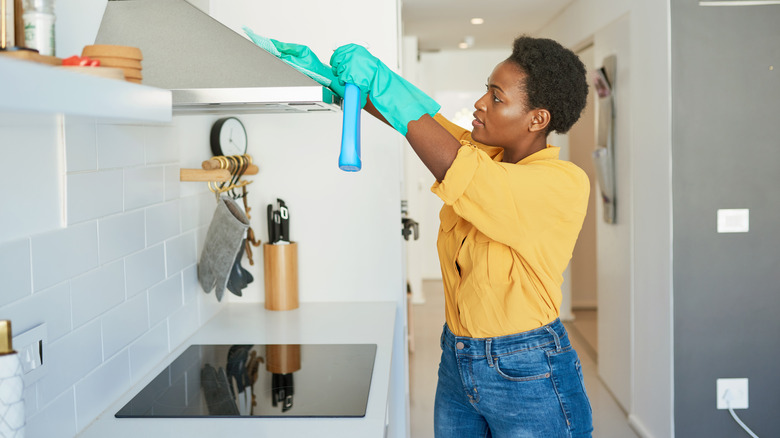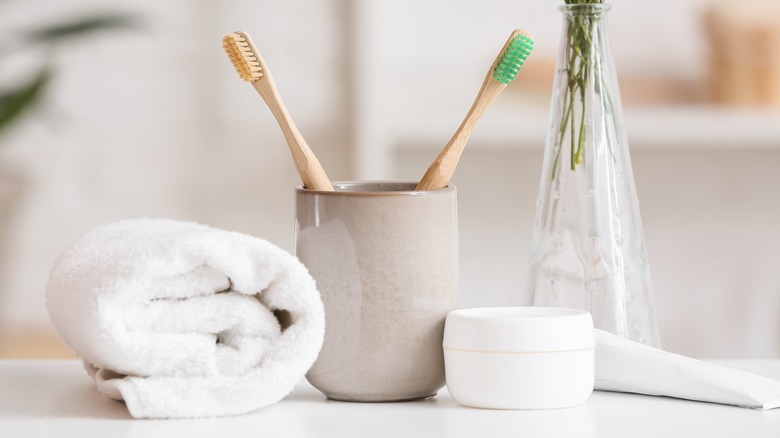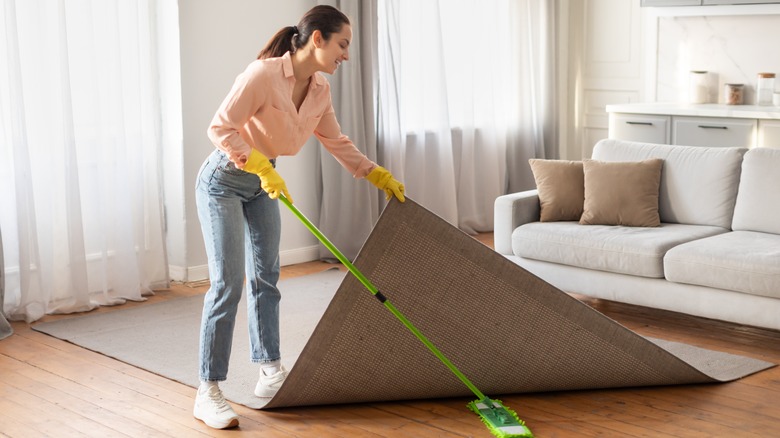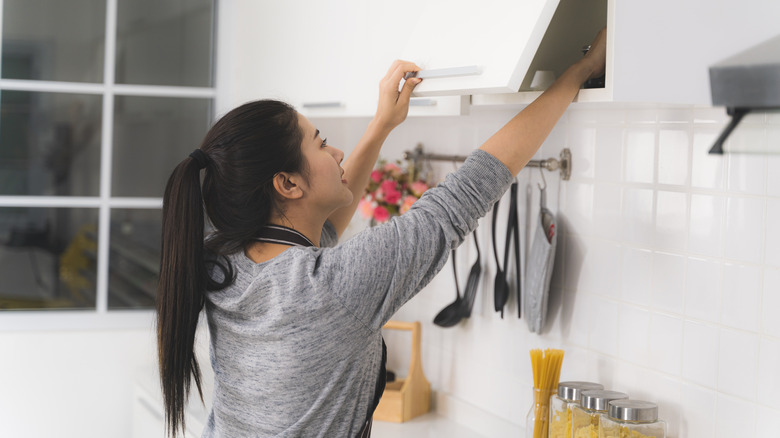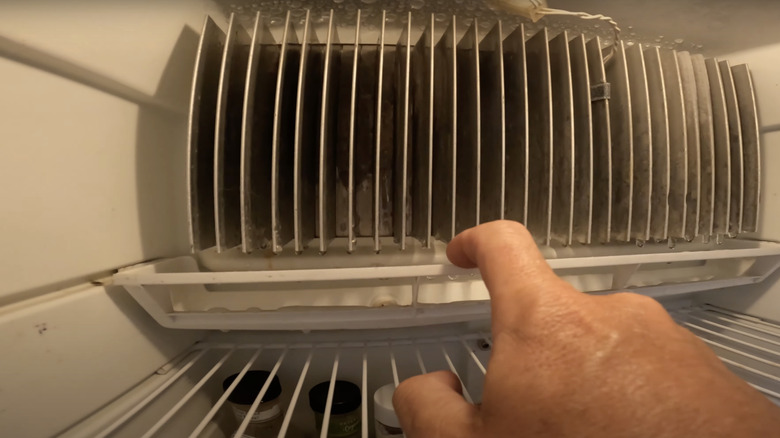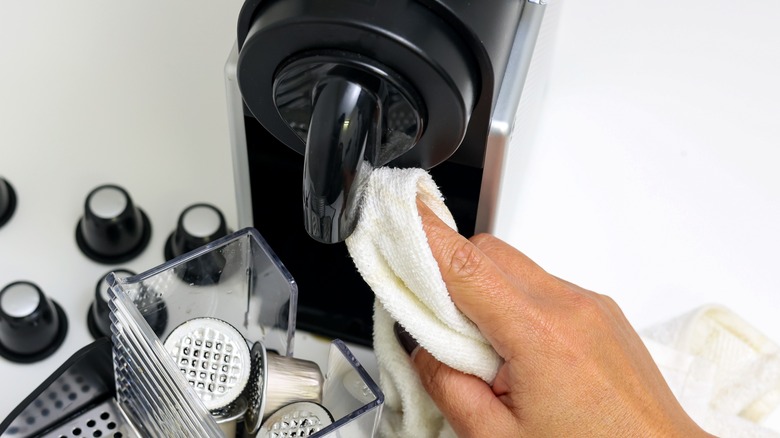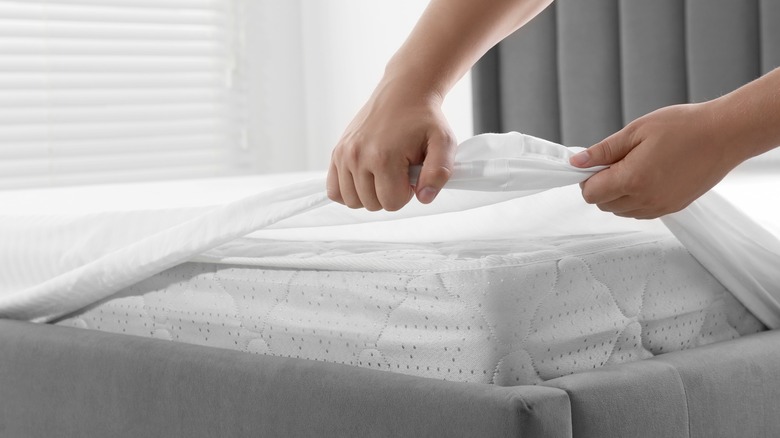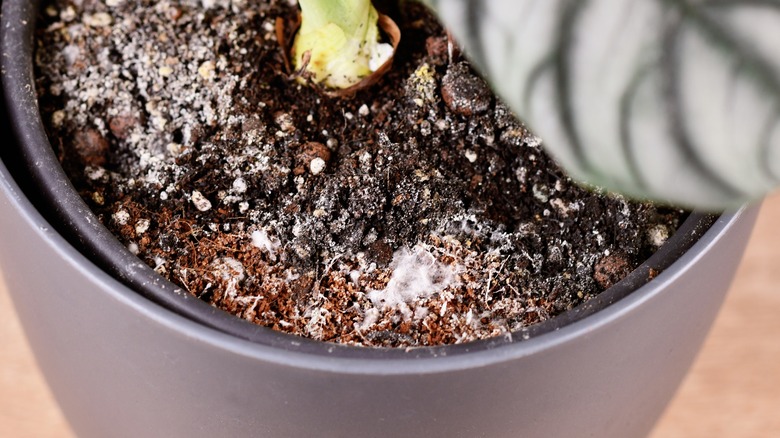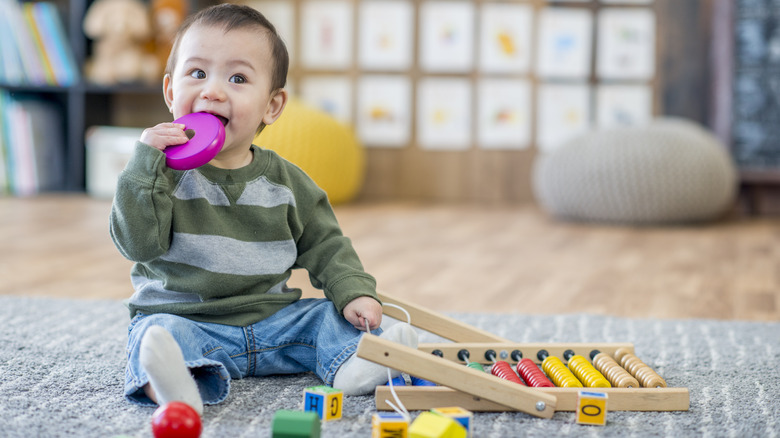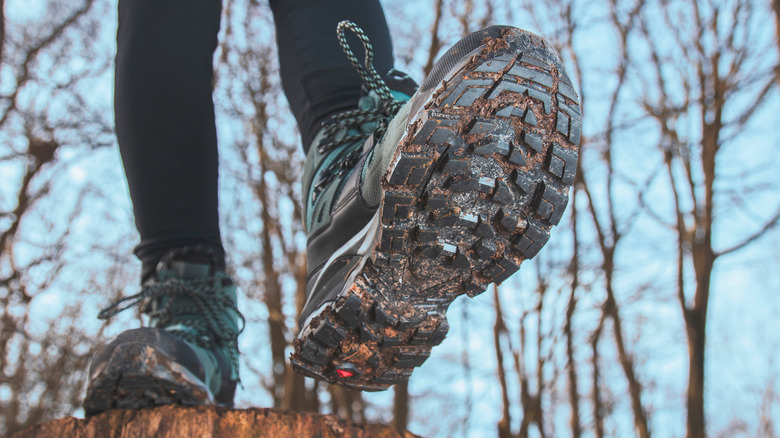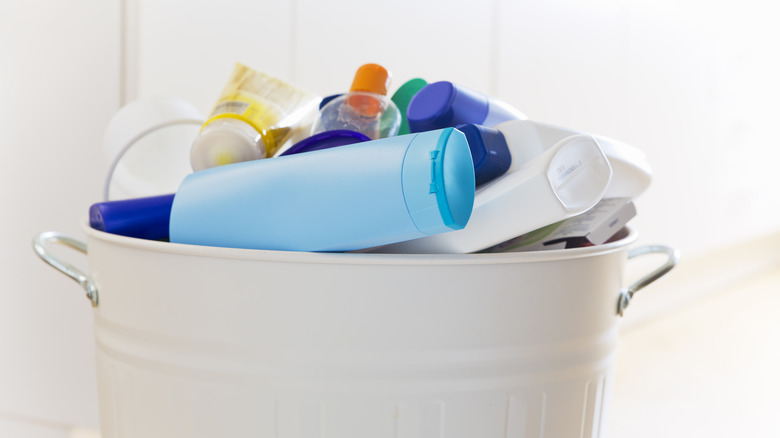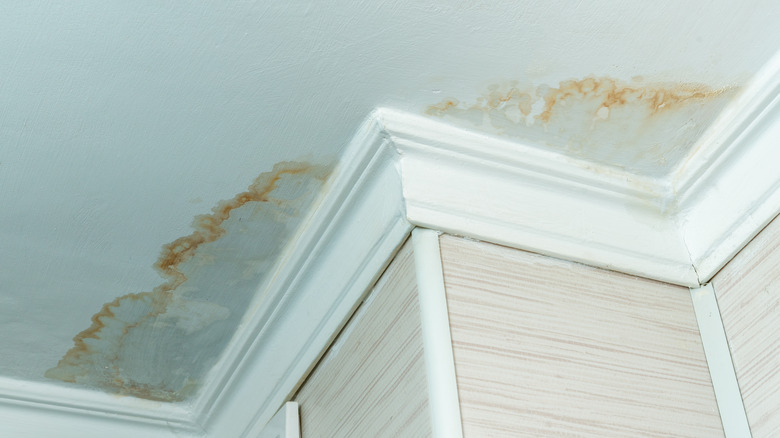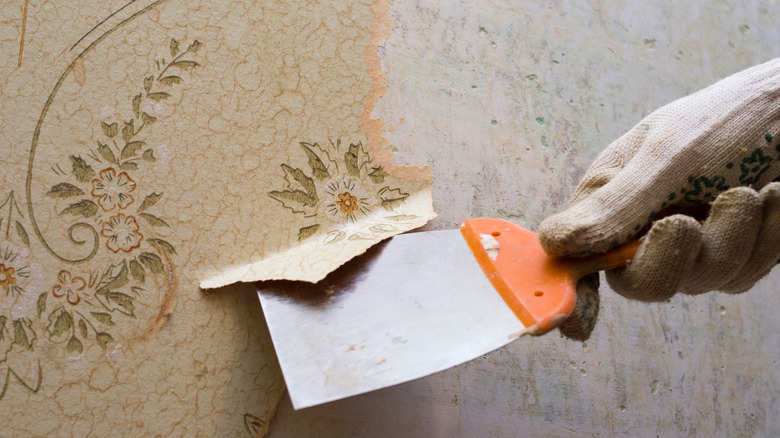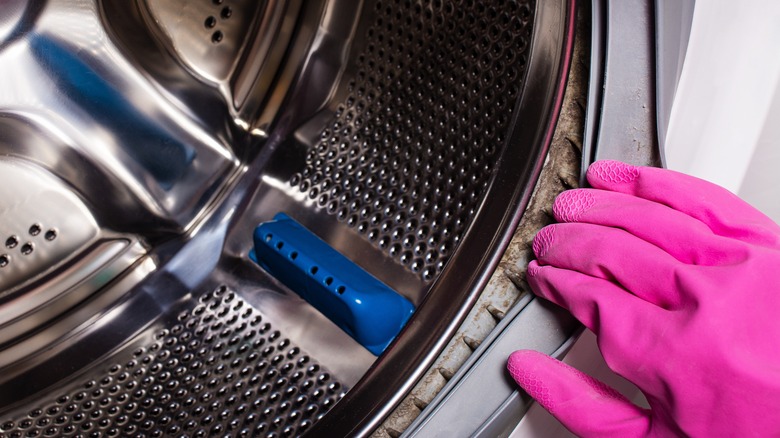Unexpected Places Where Mold May Be Lurking In Your Home
A strict cleaning routine is key to keeping a home pristine and mold-free. However, no matter how devotedly you stick to a tidy regimen, this grimy substance pops up in the most unlikely places. These fungal growths often appear in kitchens, bathrooms, and laundry rooms, where appliances run water and the humidity is high. Dark places with poor air circulation are also commonly contaminated sites.
Mold is both unsightly and potentially dangerous for your health. It spreads quickly and causes allergic reactions, which can be dangerous for people with allergen sensitivities or weakened immune systems. You must know all of mold's potential hiding spots so you can seek it out, remove it, and prevent its return. It's the only way to ensure the well-being of you, your family or roommates, your belongings, and your home itself. Below are thirteen places to find unexpected mold and mildew and how to deal with them accordingly.
At the bottom of enclosed toothbrush holders
The standard toothbrush holder is a jar-like shape with a closed bottom and open top. Tossing your toothbrush into a holder may seem more hygienic than leaving it next to your sink. Despite this notion, it's only as clean as you keep it. The inside of toothbrush holders is dark and moist, making it an ideal environment for bacteria growth. The longer you go without cleaning, the more mold that builds up, potentially making it one of the most unsanitary places for safekeeping.
Keeping your toothbrush holder clean is low effort. You only need a sponge or cleaning cloth, hot water, dish soap, and rubbing alcohol. Use dish soap and hot water to scrub whatever grime is gathered on the bottom. Wipe it dry and use rubbing alcohol to discourage future mold growth. Prevent future buildups by ensuring toothbrushes are dry with the bristles angled outside of the holder when put away.
Beneath front door mats and other rugs
Welcome mats are inviting for more than visiting friends and family. Rain and foot traffic quickly fill these mats with moisture and debris, creating a fine welcome for mold growth. If you lift up an unwashed and aged front door mat, the underside is likely covered in grimy mildew. Indoor rugs are susceptible to the same problems, but to a lesser extent since they're safely nestled indoors.
Keep your rugs clear of mildew by washing them as often as needed. Many rugs can be thrown in the washing machine, but they can also be washed by hand with hot water and antibacterial soap in a bathtub. Front door mats should be cleaned a minimum of once a month, while indoor rugs vary based on your household's overall cleanliness and busyness. If you're looking for a general timeframe— rug companies, health associations, and other professionals give varying recommendations between every six to eighteen months.
Inside kitchen and bathroom cabinets near the sink, dishwasher, and exhaust vents
Plumbing appliances are household necessities. The water that runs through them leaves droplets and humidity in its wake, moistening the dark, enclosed cabinets nearby. Even cupboards a few feet away from your plumbing appliances are unlit and unventilated, making them vulnerable to unwanted bacteria and spores.
If you find mold in your cabinets, remove everything, including food, cookware, hygienic products, and other housewares. Purchase a cleaner explicitly made for removing mold. It should contain ingredients like bleach, hydrogen peroxide, or distilled vinegar. Remember that these ingredients shouldn't be mixed together in a DIY solution. Rather, they are key components in different kitchen cleaning formulas. Spray down the entire inside of the cabinet and wipe it down with a cloth or Amazon's all-purpose scrub brush. Rinse out the cleaning solution and fully dry your cabinets before restocking them. Finish the task with a fresh towel or hair dryer to ensure no water is left behind.
In a refrigerator and freezer drip pan that catches leaks and food spills
When cleaning a refrigerator, most people are concerned with what they can see: the handles, outer shell, inner shelves, and drawers. It's important to realize that the back bottom panels of refrigerators hide drip pans. These pans are installed at the foot of popular fridge and freezer models and are designed to catch small leaks as they run throughout the day. The catch is that water should naturally evaporate, leaving nothing behind to accrue mildew growth. However, if something is wrong with your fridge and the drip pan doesn't evaporate, mold becomes a problem.
Consult your refrigerator manufacturer's manual to learn how to remove the back panel and check your drip pan. If you remove it and it's full of water, you should call a professional to take a look. As for the immediate drip pan problem, start by pouring it into the sink. Use diluted bleach or a mold and mildew cleaner to scrub the pan clean, dry it, and replace it in its designated place. Remember that cleaning the drip pan only solves a temporary issue. The water and mold will return if the refrigerator isn't repaired.
In the coffee maker used to make morning brews
There is no stronger ally than a reliable coffee maker first thing in the morning. However, you should know that the source of your morning happiness can also be a source of unhealthy bacteria. The many parts and components in a coffee machine directly touch the coffee beans and water, which can accumulate bacteria and mold over time. The drip tray, filter basket, water pot, lid, and other surfaces must be sanitized to guarantee they're safe to prepare drinks.
Coffee makers must be rinsed daily and washed at least once a month. There are hundreds of coffee maker models on the market, and you should check your manufacturer's manual for specific model instructions. Sanitize standard machines using white vinegar and water. Pour equal parts of both into your coffee maker and run it like normal. After the brewing is complete, dump the vinegar concoction and rinse the machine with two rounds of plain water. Clean the individual detachable pieces with dish soap and hot water and dry everything thoroughly. Once you reassemble your coffee maker, you're home free.
The mattress that gets slept on every night
Unfortunately, the items most important to us are also the ones most exposed to bacteria. Homes with poor ventilation, high humidity, and warm temperatures are especially prone to moldy mattresses. Spilling drinks, sweating, and jumping into bed after a shower also leave a trail of water on your bed, leading to musty growth.
There are many ways to combat mattress mold, and you should consider preventative measures at first chance. Run a dehumidifier next to your bed to reduce moisture in the air, prop your mattress up on a slatted bed frame, and use a mattress protector to help ventilate it and keep it dry. Even turning on your overhead fan helps circulate air and discourage fungus.
If you discover mold or mildew discoloring despite these precautions, there are more solutions than tossing a mattress in a garbage dump. Begin by using a vacuum attachment to remove moisture and debris buildup from the surface. Mix equal parts rubbing alcohol and water on a towel, and wipe away all the moldy spots you can see. If you don't have rubbing alcohol, use one part hydrogen peroxide and three parts water. Use high-powered floor fans or put it in a sunny window to dry. You may need to repeat this process multiple times to remove all traces of unwanted buildup.
On houseplants and their pots
Many houseplants prefer moist conditions and require regular watering and damp soil. Unfortunately, these environments attract various fungi species: sooty mold, powdery mildew, white mold, gray mold, and more. Some types are harmless, but many release spores that are detrimental to both plants and people.
Stick to houseplants that prefer drier conditions to avoid this issue. Zebra plants, peace lilies, and fiddle leaves are pretty but common victims of powdery mildew. On the other hand, snake plants, ponytail palms, and succulents provide a natural household aesthetic without enabling mold growth.
If your houseplants are already infected, mix one tablespoon of baking soda, one-half teaspoon of dish soap, and one-half gallon of water in a spray bottle. Spray down your plant wherever you see signs of fungus. Gently pat down the leaves with a clean cloth to scrape away any last remnants of mold. You should also completely change the soil and carefully repot your plant to eliminate all fungal traces.
On the outside or inside of babies' and children's toys
If you're raising a family, the last place you want to find mold is on your children's toys. Unfortunately, kids' toys are a happening place for mold development. The toys are spilled on, brought in the bathtub, left out in the rain, and many kids under three years old even put them in their mouths.
When there's no way to get into the toy's nooks and crannies, or there is an overwhelming amount of mold, the best bet is to throw it away and replace it. Although, the garbage isn't your only option. If you're determined to clean the beloved trinket, be mindful of what it's made of.
Rubber and plastic toys are easiest— wash them in a sink or bathtub with warm and soapy water. Conversely, never submerge wood and electronic items in water. Use a lightly moist towel to gently but thoroughly scrub down their surface. If you're lucky, some of your child's collection could be dishwasher-safe, which is disclosed on the original packaging or the toy itself. Toys with batteries, strings, voice boxes, or removable parts won't survive a dishwasher run, so keep them out of the intense wash and dry cycles.
On the bottoms and in the soles of well-worn shoes
One of the smartest things you can encourage is for your household to kick off their shoes at the door. This stops them from tracking mud and grime through your home. While it keeps the rest of your home safe, bacteria still festers over time on the pair of shoes. Foot sweat, walking through puddles and rain, and other factors leave the insides moist. Meanwhile, the bottoms also pick up various germs as their wearer treks across public areas.
Periodically inspect your shoes for mold growth, especially after long outings and days spent in cities or outdoors. If your shoes are wet from the day's events, dry them with a hair dryer or toss them in your clothes dryer. Another option is to collect silica packets from packaged goods. Drop the packets in your shoes, and they'll work the same as they did for your previous purchase, absorbing excess moisture.
If you work outdoors, in a professional kitchen, or in other potentially wet environments, invest in a free-standing shoe rack. Amazon's black metal boot rack props your shoes upside down, airing and drying them out between shifts or excursions. Your shoes will smell better, feel cleaner, and ensure another mold-free space in your home.
Inside water-based, preservative-free health and beauty products
Water-based and preservative-free beauty products are trending because they're natural, healthy, and safe for sensitive skin. The only downside is that these bottles aren't resilient to mold without those dreaded additives and preservatives. Even products with preservatives eventually succumb to hidden bacteria. Therefore, be warned that all-natural formulas can develop grimy residue, especially if used for many months.
The scary part about this hidden mold growth is that using the product puts it on hair, skin, and other body parts. This potentially causes irritation or an allergic reaction. Like everything else susceptible to mold, beauty products are more likely to be infected when stored in warm, humid spots. Try to find a storage space that is both dry and cool to prevent spoilage. It may be better to store these items in a closet or cupboard outside of your bathroom.
Remember that most products also have expiration dates. These dates aren't an exact countdown to when a product is unusable. They're more of an estimate of how long you can use the product and expect it to work effectively and safely. Even if an item hasn't reached its expiration, don't risk your well-being by using parts seemingly unaffected by the mold. Throw away the product and buy a replacement as soon as possible.
On the ceiling
Even when deep cleaning a home, it's easy to forget to look up. A ceiling is as susceptible to mold as the rest of a house, even more so when there are water leaks and high humidity. Before treating the issue itself, you should find the source of your wet and moldy ceiling. Check your roofing, upstairs appliances, or nearby air ducts. Any of these features could be causing water damage. Don't skimp on hiring a professional contractor if you cannot solve the problem on your own.
Once you or a contractor solves the root problem, there are two ways to remove mold. If your classic or modern home has tile ceilings, you can replace the affected tiles with new, untainted ones. If you have a conventional ceiling, cleaning is easier than a full renovation. Hire a professional or use Amazon's long-handled mop with an equal-parts bleach and water mixture to scrub the growth off of your ceiling. Make sure you wear protective eyewear since you'll be working overhead: the last thing anyone needs is mold and bleach combination dripping into their eyes. Luckily, home improvement stores like Lowe's and Home Depot carry such equipment.
On or beneath wallpaper
Traditional paste-on wallpaper is re-emerging with other maximalist trends. Although it's lovely to look at, it's an unwise installation in improperly insulted or ventilated homes. In these environments, mold grows on top or between the wallpaper and drywall. The fungal growth is tricky to spot amongst wallpaper patterns, especially since it can grow on either side of the wallpaper. Moldy paper plaster is discernable by discolored, misshapen spots or musty odors. You or someone in your household may also experience flu-like symptoms, especially when near the contaminated area.
Start by finding gaps in the insulation and ensure the HVAC system runs properly. Don't hesitate to contact a professional HVAC contractor to perform this troubleshooting. Once the cause of the mold is put to rest, it's time to remove the issue itself. During a minor case, combine warm water with a mild soap. Use a soft cloth to gently wipe the growth off the wall. In more severe instances, rely on a mold remediation service. Mold is dangerous in large amounts, and improper removal releases even more spores into your home.
If the mold reoccurs despite your best efforts, paint the walls instead of plastering wallpaper. Humid areas like kitchens and bathrooms are especially volatile for paste-up paper, and it's far more difficult to control mold and mildew. Wallpaper is more reasonable in dry climates and rooms like bedrooms, dining rooms, living spaces, and offices.
Between the folds of a washing machine door gasket
It's only natural that washing machines grow mold due to their proximity to water and humidity. Open your washer door and check between the folds of the rubber gasket. Mold often nestles in the creases since they retain water after standard washes.
Mix one part bleach with three parts water in a spray bottle. Before you use it, make sure your laundry room is ventilated. Open nearby windows and doors or set up a fan to keep yourself from breathing in chemical fumes. Splatter the homemade cleaning solution all over the door, including the seal and gasket. Let it sit for several minutes before wiping it away with a clean cloth. The bleach formula should eliminate mold and prevent it from returning for at least a month. Remember to clean your washer with bleach or run its sanitizing cycle around once per month to deter future mold and mildew.
